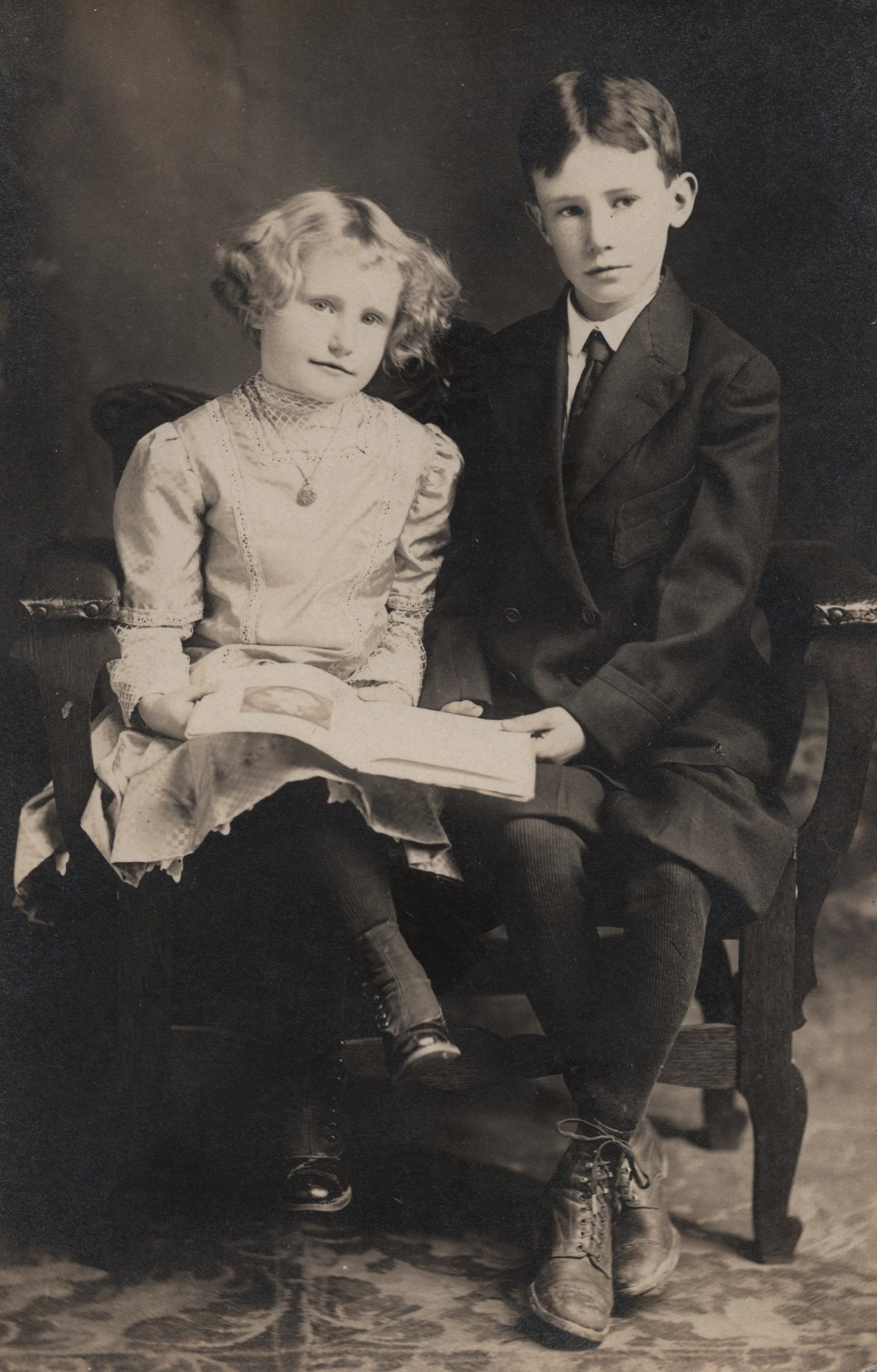Welcome to Our Summer Interns!
Meet Grayson and Grace—two of our outstanding summer interns at the Ohio History Connection!
Objects embody cultural attitudes and values, and toys are no exception. The Ohio History Connection collection contains a handmade bowling set that Mary Eloise and Earle Green of Logan County, Ohio, played with as children in the early 1900s. The bowling set includes a ball and ten pins. Each pin depicts a person, some of whom are reduced to ethnic and racial caricatures.
Many items from the late 19th and early 20th century, like the Greens’ bowling set, used imagery grounded in ideas of ethnic and racial superiority. Often, they reflected the anxiety White Americans felt as others sought opportunity in the United States.
One of the pins in the Green’s bowling set depicts a Black man whose mouth is agape and surrounded by thick red lips. After the emancipation of Black people from slavery, White people mounted efforts to maintain racial superiority, with stereotypes about Black people and their physical appearance playing an important role. Scientific studies, for example, suggested physical traits like protruding lips placed Africans on the “lowest position of the evolutionary scale.”1 Popular culture portrayed Black people as buffoonish, lazy, and violent. Mass-produced toys featured imagery based in such “science” and stereotypes. As the pin from the Green’s bowling set shows, a handmade toy followed the lead of mass-produced items and deployed such negative imagery.
Another pin in the bowling set depicts an Asian man. His appearance includes stereotypes associated with Chinese people during the 19th and 20th centuries: his eyes are rendered as narrow slits; he wears a long thin moustache; and his skin tone is more yellow than the other characters’. In the late 19th century, Americans became concerned as more Chinese immigrants came to the United States for employment opportunities. This new competition for jobs led White Americans to vilify Chinese people. The United States government even went so far as to pass the Chinese Exclusion Act in 1882, which barred Chinese workers from entering the country. During this time, media depictions portrayed Chinese people with caricatured physical features, suggesting they were inferior to White Americans and endangered Western society.
An Irish man, denoted by his green bow tie, is also portrayed on one of the pins. He wears a sly grin, but his red nose and swollen eye are the most pronounced features. They reflect stereotypes of Irish people as drunken and disorderly. Such depictions appeared in 19th century political cartoons and popular magazines; some publications conflated these stereotypical traits with Irish Catholics, reinforcing a belief of Anglo and Protestant superiority, which many nativists held. The underlying message of the caricatures was that Irish people were not fit to be productive citizens of the United States.
Another pin in the set depicts a Jewish man. He has long sideburns, a beard, and pronounced hooked nose. Such physical features appeared on Jewish characters in art, literature, and popular culture as far back as the 13th century. These characters were often portrayed as greedy and manipulative; consequently, such negative traits became strongly associated with Jews. By the 19th century, political cartoons in Europe and the United States—complete with depictions of hooked nose Jews, similar to that on the bowling pin—fueled fears that Jewish elites controlled global financial markets. As Jewish immigration to the United States increased during this time, these stereotypes coalesced to present the Jew as a menace to the dominant culture.
White and Anglo people represented the United States’ dominant culture since the colonial era. One way they maintained this power was through the deployment of negative stereotypes of other groups. But what about the manner in which they were represented? One of the White men in the bowling set wears a bow tie with a pattern resembling a Union Jack (though the red and blue are reversed), suggesting he is British. His hair is neatly maintained and he wears a monocle. Monocles became a symbol of modernity, sophistication and wealth in the 19th century. With his dignified appearance, he is meant to appear superior to the other non-White and -Anglo figures in the bowling set.
Caricatures of non-White and -Anglo people have been used to reinforce ideas of racial and ethnic supremacy. Such depictions have been (and continue to be) featured on consumer products, media, popular culture and more. By appearing in so many places, these images become normalized and reinforce the harmful beliefs they represent. We do not know if the Green children, who were White, thought about the deeper meaning behind the imagery in their bowling set; for them, it was a beloved toy from their childhood. Today, as an important part of our collection, it has further significance that cannot be ignored—with its use of stereotypes, the bowling set is a lens through which we can explore the intersection of race and power in the United States.

Photo courtesy of the Logan County Historical Society
1. Encyclopaedia Brittanica (1884, p.316): https://bit.ly/3rtOWwO.
Further Reading